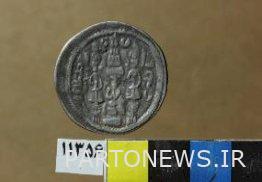Studying and examining the collection of Sassanid coins confiscated in Nahavand/ compiling a birth certificate for each coin

According to the Aria Heritage report, citing the public relations of the Cultural Heritage and Tourism Research Institute, Azadeh Heydarpour, a member of the scientific faculty of the research institute and the executive of the project on March 13, 1401, announced this news and said: Sasanian coins are one of the most important sources for understanding the art, politics and economy of the Sasanian period and contain information with There is a value about the script, the language, the number of years of a king’s reign, the economic situation when the coin was minted, as well as the historical events that caused the coin to be minted, etc.
Pointing out that one of the most important features of Sasanian coins is their minting date, he clarified: In the Sasanian era, when each king sat on the throne, the history of his kingdom began and the history of his kingdom ended with the end of his reign.
The member of the academic staff of the Research Institute of Cultural Heritage and Tourism added: The years of minting on the back of the coins correct the errors and ambiguities in the historiography of the years of the kings’ rule, for example, it is mentioned in the historical books that Queen Purandakht ruled Iran for one year and four months. has done, while the existence of coins with multiple years of one to three confirms his three-year rule.
Regarding this project, Heydarpour said: In 2018, a number of Sassanid coins were seized by the Nahavand police force from antiquities smugglers and transferred to the Hamedan Heritage Museum. They have been covered with sediment, tarnished surfaces, etc., and their cleaning and descaling project was completed by the colleagues of the Hamedan Museum laboratory. These coins are currently stored in the Hamedan Museum repository.
He pointed out: the research project of studying and examining the collection of confiscated Sasanian coins obtained from Nahavand was carried out with the aim of documenting and organizing the coins of this collection, and for each of the coins, a birth certificate was obtained according to the information data. It came from Hamadan province and was compiled.
The executive of the project added: In addition to the characteristics of the coins, these birth certificates include copying, writing and translating the inscriptions on the front and back of the coins, and the birth certificates have been arranged in the order of the kings and based on the year the coins were minted.
A member of the scientific board of the Research Institute of Cultural Heritage and Tourism stated that the largest number of coins in this collection belong to Khosrow II, Hormuz IV and Khosrow I, respectively, and stated: The coins of the confiscated collection of Nahavand in terms of the variety of mints and the year of coin minting. It is important.
In the end, he added: The data of this research has been compiled based on the chronology of the kings and the mint (alphabetic-year of minting), as well as charts based on the years of coin minting and its number in the Nahavand collection.
end of message/

